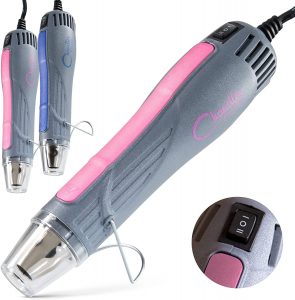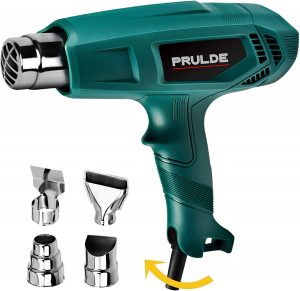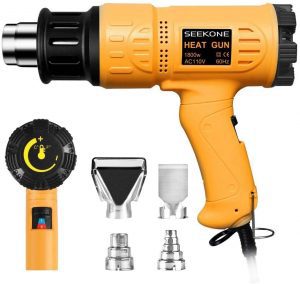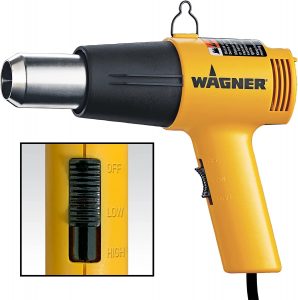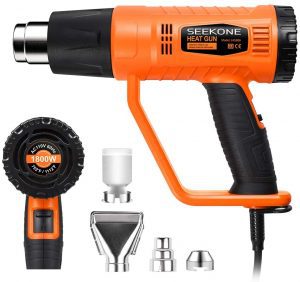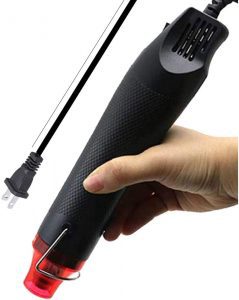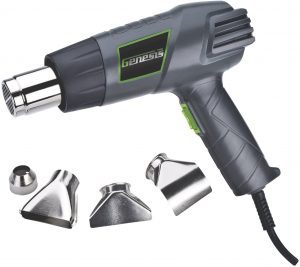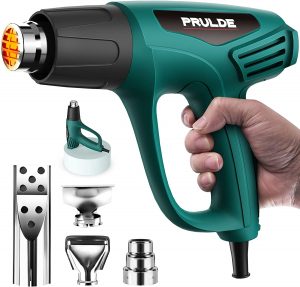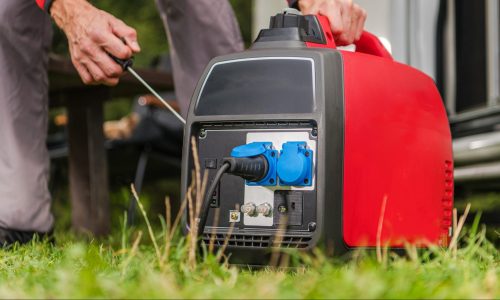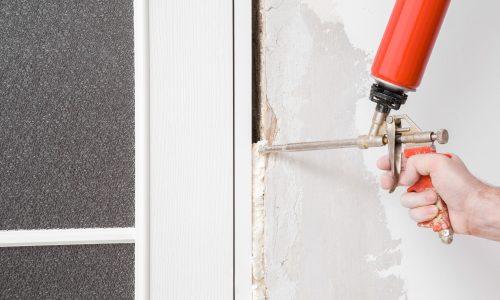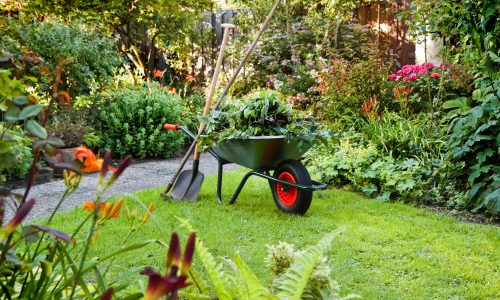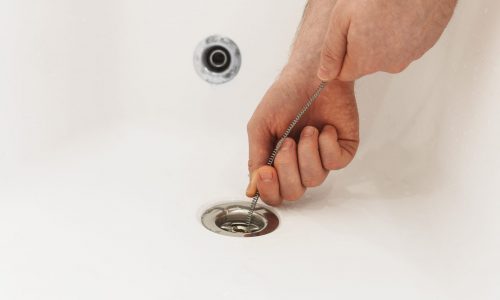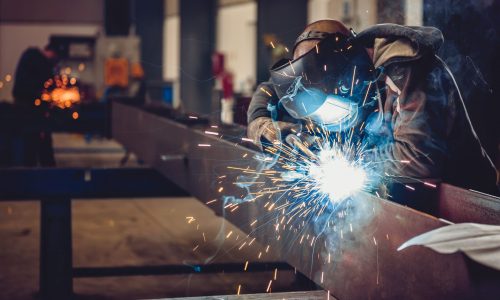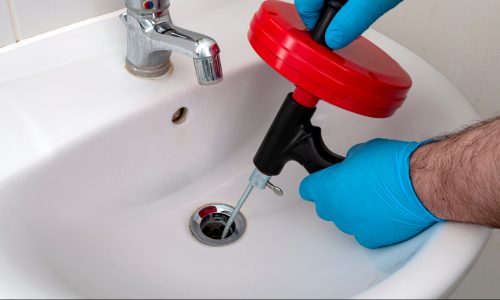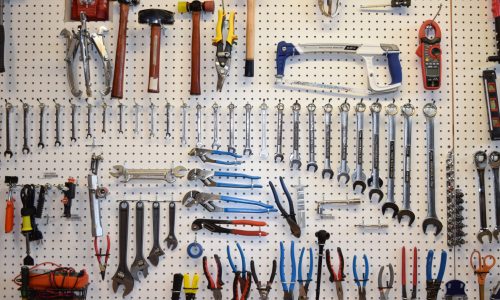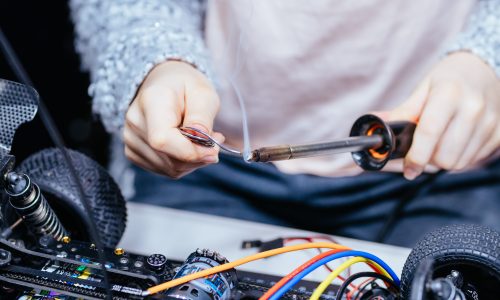The Best Shrink Wrap Heat Gun
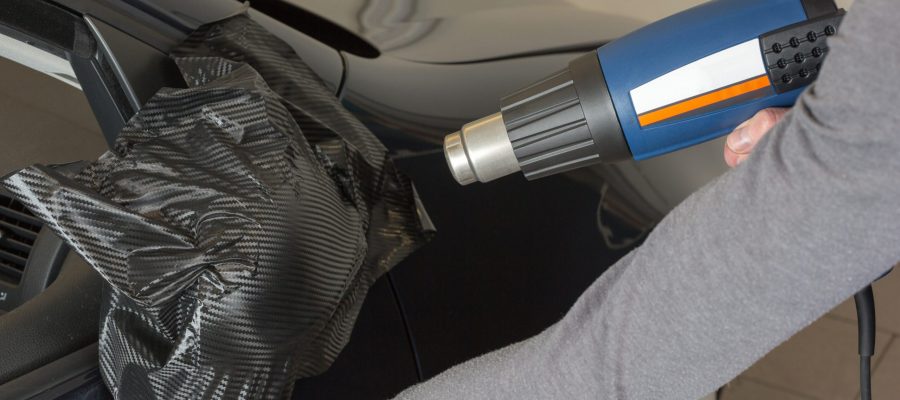
Our Review Process
Don't Waste Your Money is focused on helping you make the best purchasing decision. Our team of experts spends hundreds of hours analyzing, testing, and researching products so you don't have to. Learn more.
Our Picks For The Top Shrink Wrap Heat Guns
- 1. Chandler Tool Extra Long Cord Insulated Shrink Wrap Heat Gun
- 2. PRULDE ETL Certification Fast Heat Shrink Wrap Heat Gun
- 3. SEEKONE Ergonomic 4-Nozzle Shrink Wrap Heat Gun
- 4. Wagner Spraytech Adjustable Settings Shrink Wrap Heat Gun
- 5. SEEKONE Fireproof Professional Shrink Wrap Heat Gun
- 6. Homidic Compact Shrink Wrap Heat Gun
- 7. Genesis GHG1500A Multiple Nozzle Shring Wrap Heat Gun
- 8. Neu Master PRULDE User Friendly Shrink Wrap Heat Gun
Crafters are sure to love this shrink wrap heat gun, which has an extra long 5-foot cord for convenience. The ergonomic design makes the gun comfortable to hold, while the two speed settings make the tool perfect for everything from jewelry making to applying vinyl wraps. The inclusion of the kickstand also increases the functionality of the gun.
Multiple Color OptionsYou'll find this shrink wrap heat gun comes in a choice of pink, red, yellow, green or blue.
This shrink wrap heat gun weighs just over 1 pound, which means it's easy to hold and control. Users will appreciate the unique design, which allows for standing the heat gun upright for hands-free use. Additional attractive features include two heat settings and a fast heating time of just 1.5 seconds.
Affordable Price TagLooking for a budget-friendly shrink wrap heat gun? This economical pick is your best bet.
Adjust this powerful shrink wrap heat gun to any temperature between 120-1,200 degrees Fahrenheit with heat and airflow nozzles for further fine-tuning. Overload protection and an ergonomic design make this tool safe and easy to use.
Super UsefulThis DIY tool is great when you need flexibility and want to work on a range of projects.
For those jobs where you may need both hands, this durable shrink wrap heat gun features an integrated stand for safe, hands-free operation. Choose between a 750- or 1,000-degree Fahrenheit operating temperature and two fan speeds.
Hands-Free OperationThis heat gun, featuring two temperature options, is a great choice for a variety of jobs.
Buying Guide
Heat guns are an often-overlooked versatile workhorse of the DIY world. They operate like high-powered hair dryers; they have an intake fan that directs air to a heating element and then to a fan that propels the hot air out the nozzle.
Non-industrial, at-home models can produce temperatures of up to 1,200 degrees Fahrenheit. These tools are used in a variety of applications. Classic heat guns are often designed to heat-shrink plastic wrap or tubing.
They can also be used to strip paint, soften glue, apply vehicle decals or remove old bumper stickers. Many shrink wrap heat guns even have plumbing applications, such as defrosting frozen pipes, bending plastic piping or loosening solder joints.
When choosing a heat gun, consider its temperature range and how it’s controlled, as well as fan speed. Most heat guns on the market today have at least two temperature settings.
However, some guns do have a single temperature setting. On these heat guns, the only way to control the temperature is to either move the gun closer or farther from the target. However, as a heat gun is placed further away from your work surface, the effective temperature not only decreases, but the surface area affected also increases.
Fan speed helps control the surface area a heat gun hits. A higher fan speed covers more area, while lower fan speeds are better for precise projects, as they affect a smaller surface. A combination of variable fan speed and variable temperature can provide very fine control.
What to Look For
- Evaluate your needs before purchasing a heat gun. What will you be using it for and how often will you use it? What features would you like it to have? How much power do you need for the projects you’re doing?
- A simple dual-setting gun with suffice for many DIY projects, while more complex work like plumbing will need a gun with a full variable-temperature range from 120 to 1,100 degrees Fahrenheit.
- Heat gun nozzles can further refine airflow to make it more suitable for specific applications. Many heat guns come as a kit with nozzles.
- Don’t forget about ease-of-use improvements like longer electrical cords, ergonomic grip, and hanging hooks.
- Also consider safety features, such as a dead man’s switch and overheating cutoffs.
More to Explore
The idea of humans applying heat to materials to make them easier to work with or to induce the emergence of certain properties goes back tens of thousands of years.
Gas-powered devices and more elementary heat guns date from the early 20th century or even further back. But, according to Haus of Tools, the first electric heat gun was developed in 1930 with a patent awarded to C.H. Kenney in 1934. This “apparatus for removing paint” incorporated a heating element, a fan and an insulating disc.

